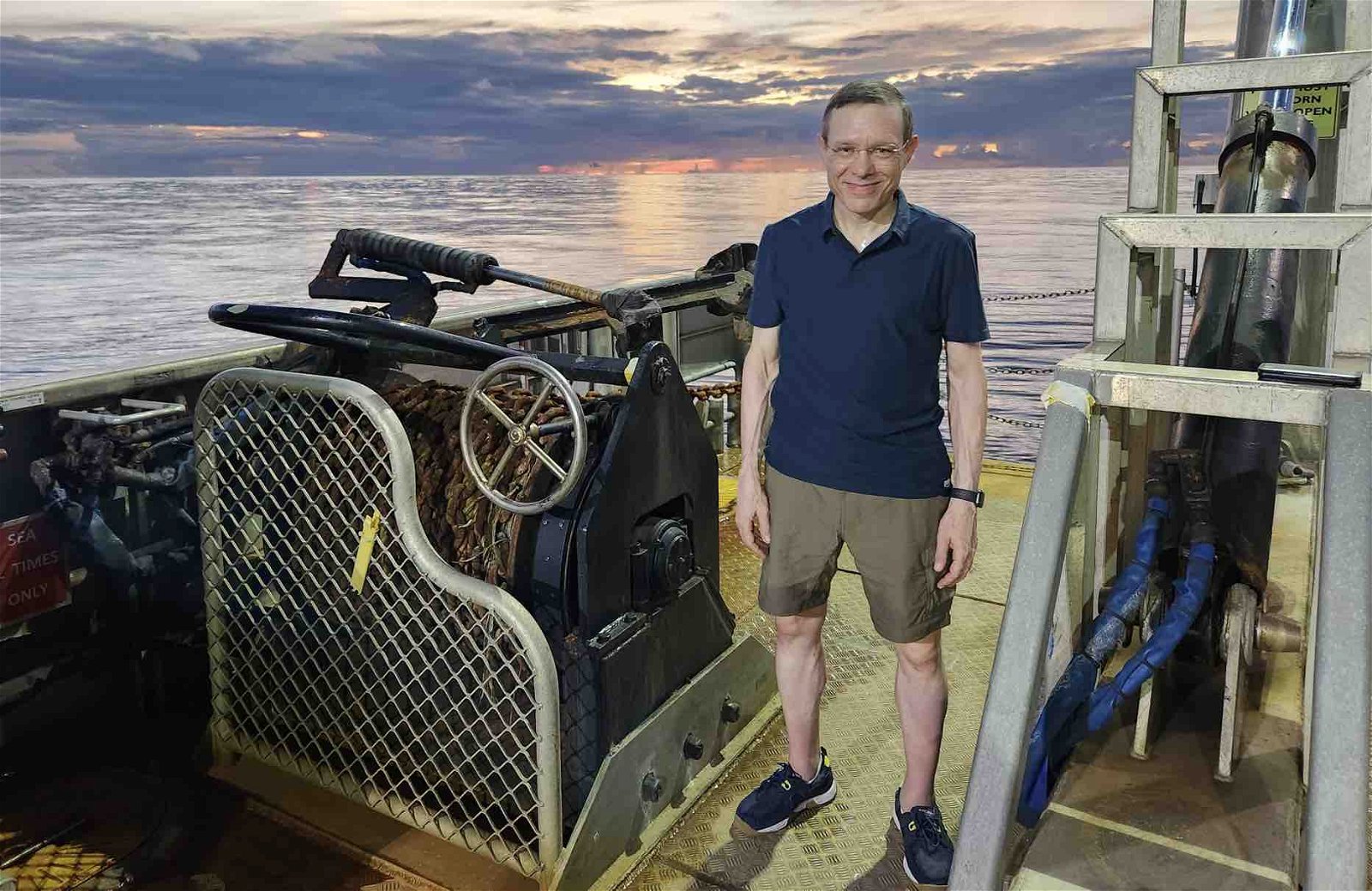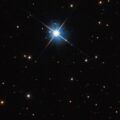These combined 11-13th installments in an ongoing series of updates from Harvard Astronomer Avi Loeb, head of The Galileo Project, document the team’s expedition to attempt the recovery of an interstellar object from the floor of the Pacific Ocean. This combined three-part entry covers Day 8 (June 18, 2023) of the team’s expedition.
Rob McCallum, the interstellar expedition coordinator, woke me up from the sofa at 10 PM. “It is a good run. We are about to pull out the sled an hour earlier than originally planned.”
When I showed up on the ship’s deck a few minutes later, Rob Millsap approached me and said, “I have a good feeling about this run. From the behavior of the winch cable, I could tell that the sled spent a few hours on the ocean floor.”
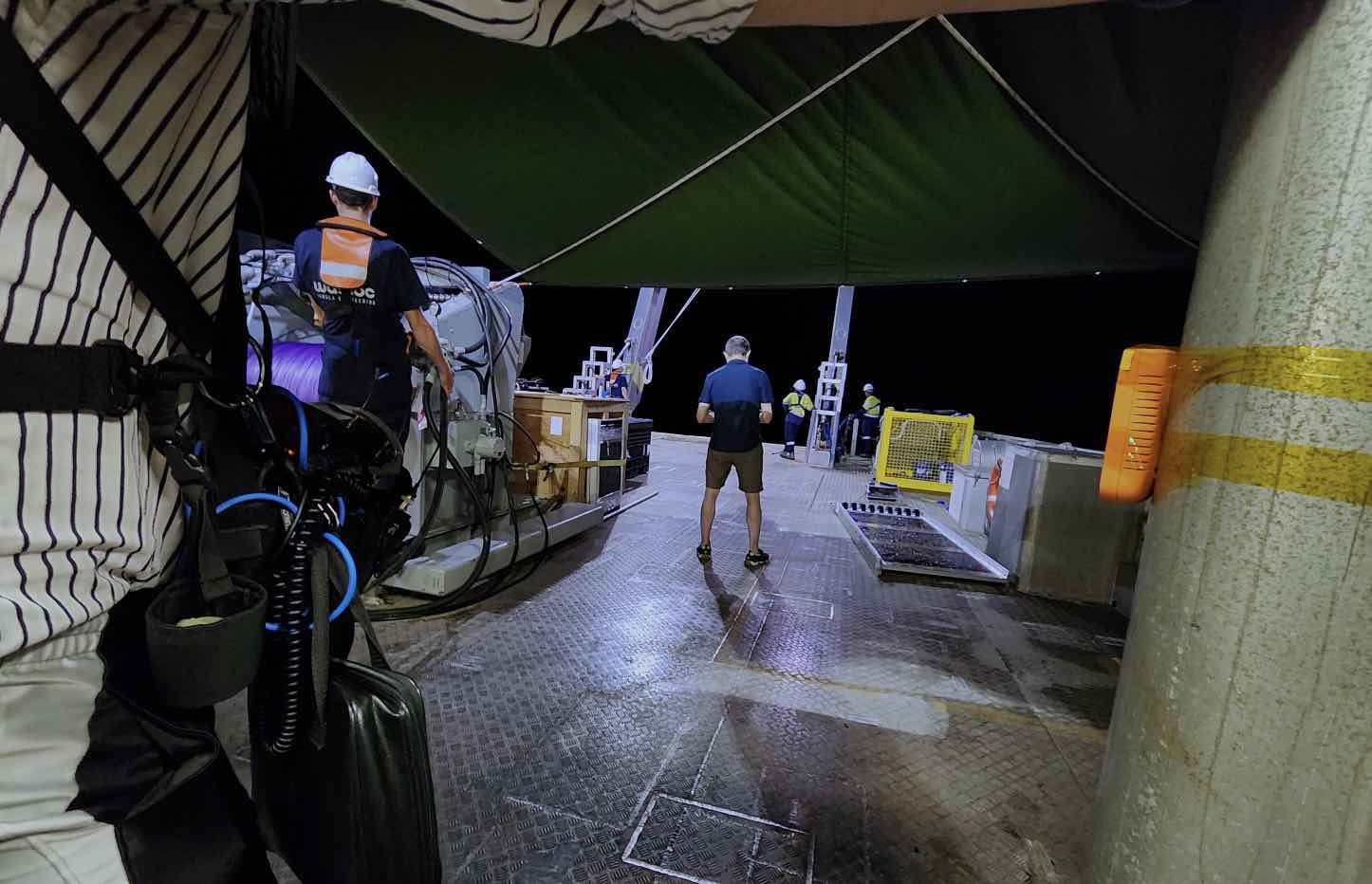

As we were waiting for the sled to be lifted out of the ocean by the winch cable, the periodic humming of Silver Star sounded like a drum roll. The navigation coordinator and “party chief,” Art Wright, showed me the path of Run 4, which went straight along the most likely path of the first recognized interstellar meteor, IM1. We were lucky that ocean currents were minimal during this run. I looked up at the stars overhead, thinking that IM1 could have originated from one of them. Recovering its debris is equivalent to picking up a package that was delivered to our front door. For the first time in history, we aim to recover a package that originated from an interstellar source.
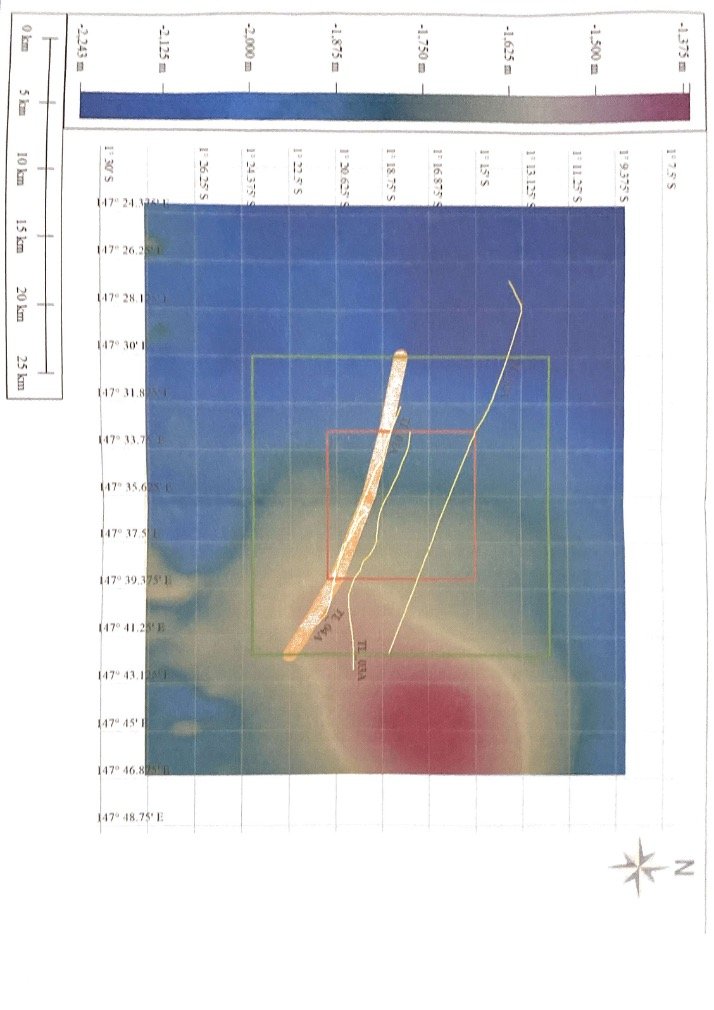

As soon as the sled was placed on deck, it was clear that there is too much food on its magnetic table. All magnets on the light side of the sled were saturated with black particles, some thin filaments, and fragments of broken debris but with no spherules as commonly found in meteor-strewn fields. We went ahead to fill 13 vials and two water buckets with debris that will be studied thoroughly tomorrow.
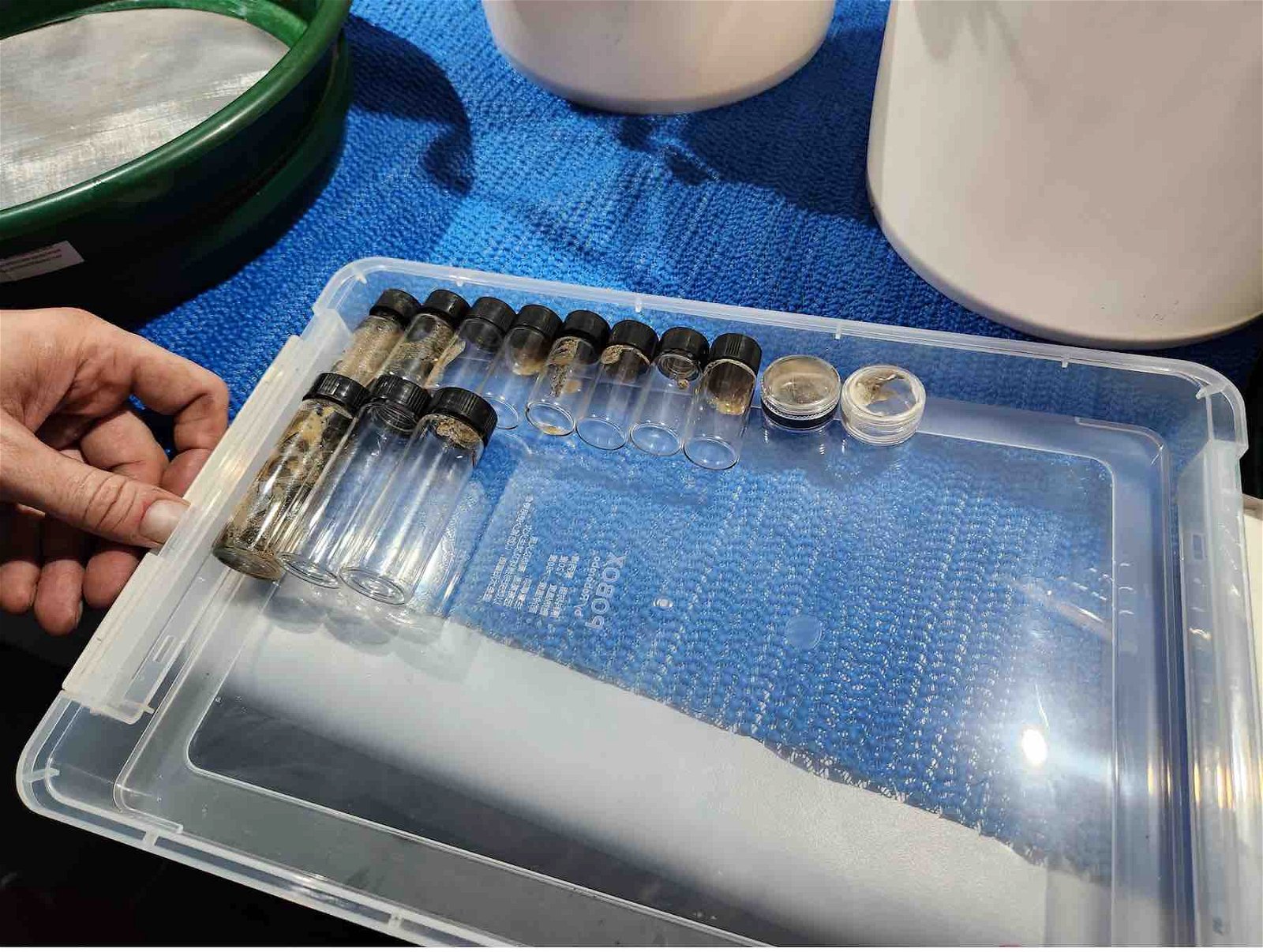

Surprisingly, the front of the sled looked like a Jackson Pollock painting. It was covered with fresh white paint of unknown origin. The sled must have bumped into something on the ocean floor that painted it. I scooped the paint with my finger and filled a vial so that Ryan Weed would examine its composition with the X-ray fluorescence analyzer.
“Based on the video footage, a big white ball hit the sled at some point along its path on the ocean floor,” Rob McCallum said.
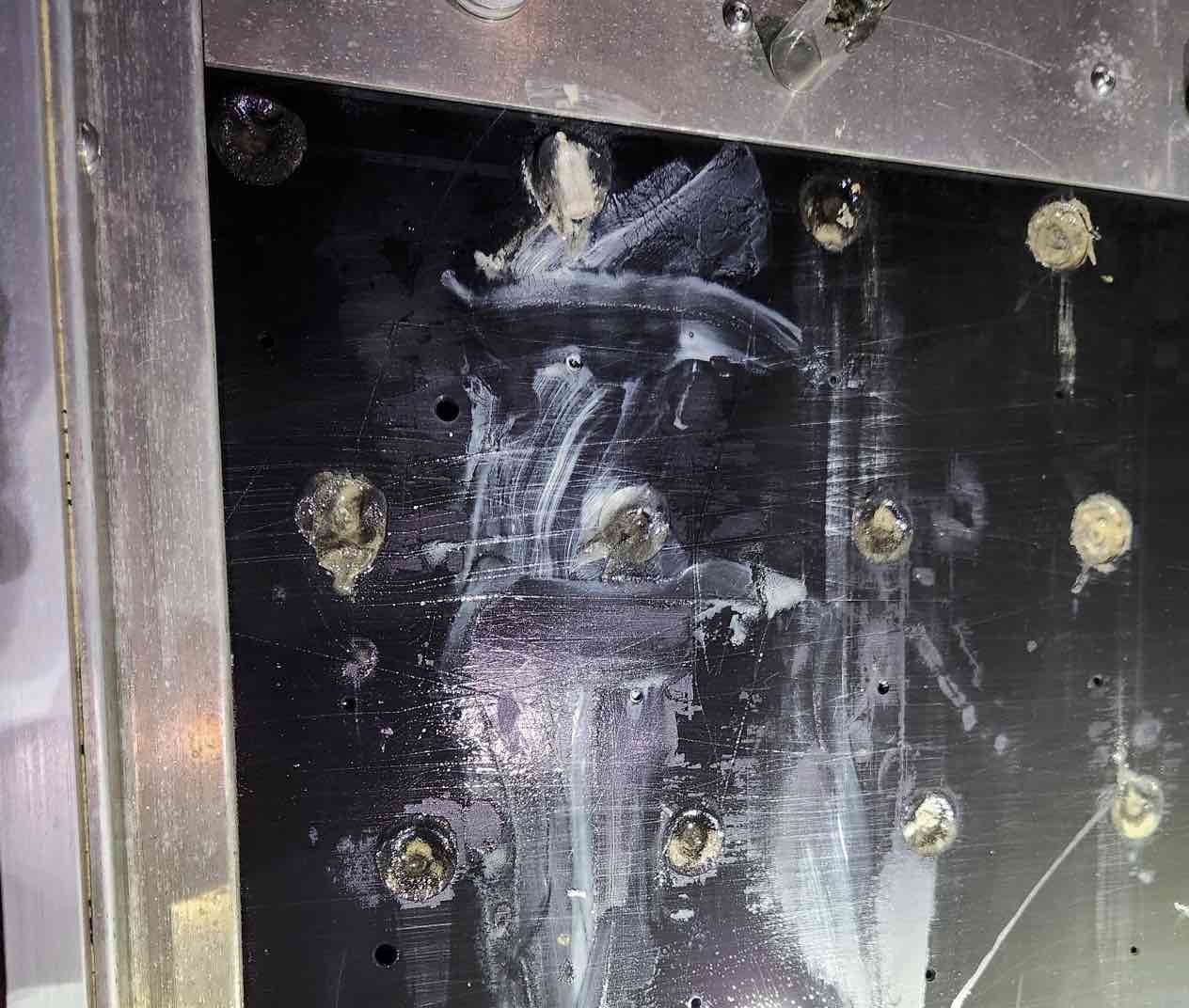

The video footage showed a consistent dragging of the sled on the ocean floor, as suspected by Rob Millsap. The cameras gave us an excellent view of the floor, which is covered with debris. A sample video can be viewed by clicking here. We plan to review the entire footage thoroughly.
After viewing the video footage, I told Rob Millsap and Art Wright what I often tell the very best members of my research team at Harvard: “This work is officially graded as an A+. Keep doing what you are doing.” They immediately launched the sled back into the water.
For a video tour of Silver Star when Run 4 was just launched, click here.


Two hours later, most team members went to bed. Now, I can have my morning jog at sunrise on the deck as Silver Star pulls the sled along on the ocean floor in search of interstellar partners. Could the life of a scientist be more thrilling than that?
Part 12 (June 18, 2023): A Rich Harvest of Wires and Fragments from IM1’s Path
After a sleepless night, I went out to Silver Star’s deck for a beautiful sunrise in anticipation of Run 5 along the second half of the most likely path of the first recognized interstellar meteor, IM1. The harvest was as rich as Run 4’s, with multiple wires, flat fragments, and even a bent human-made brad nail.
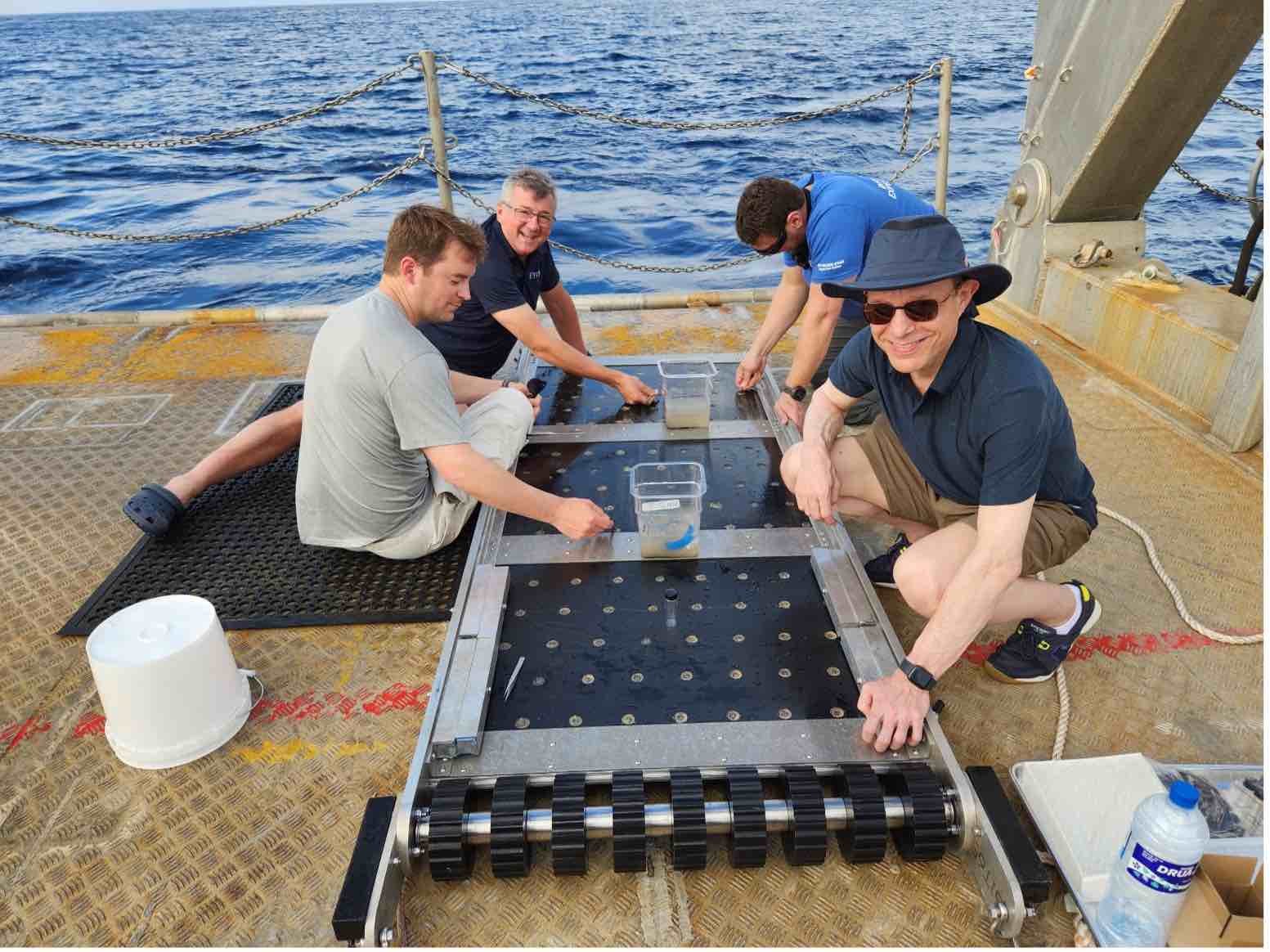

In Run 4, the sled bumped into a paint bucket on the ocean floor. I took a sample of the paint and asked Ryan Weed to check whether it has lead, labeled Pb in the periodic table of elements. White is a common color used on US Navy ships, and in 1978, the use of lead in paint was banned by law. If the paint bucket was dropped from a US Navy ship nearing Japan during World War II, we would find Pb in our X-ray fluorescence analyzer.
We can estimate within an order of magnitude the number of nails and paint buckets per square kilometer. The combined survey area of Runs 4 and 5 was twice the width of the sled – roughly half a meter, times the length of the line being surveyed – roughly 10 kilometers. This gives a percent of a square kilometer, implying that there should be about a hundred nails or paint buckets per square kilometer on the ocean floor at this location. Whereas this number sounds reasonable for nails, it is far bigger than I expected for Navy paint buckets. If true, it means that Navy personnel were particularly careless about the environment and contaminated the ocean with plenty of trash. Anyone contaminating a busy street in Manhattan with a hundred paint buckets per square kilometer would have been jailed for public mischief and vandalism by the New York City police. Shoving this much trash under a mile-deep body of water is equivalent to hiding dirt under the carpet.
The key question for today’s analysis is whether the wires or flat fragments that were recovered in Run 4 & 5 were all made by humans or perhaps some were delivered by IM1 as the product of an extraterrestrial technological civilization.
We have recovered hundreds of grams of materials from Runs 4 & 5. They will enable a thorough calibration of the background and an analysis of the composition and abundance of radioactive elements in outliers.
In contrast to Navy trash, interstellar trash is our treasure. We would never jail our interstellar neighbors for public mischief and vandalism. Instead, we might be inspired to send our own space probes to their backyard.
Part 13 (June 18, 2023): Analysis of Materials Retrieved from Runs 4 & 5 in IM1’s Path
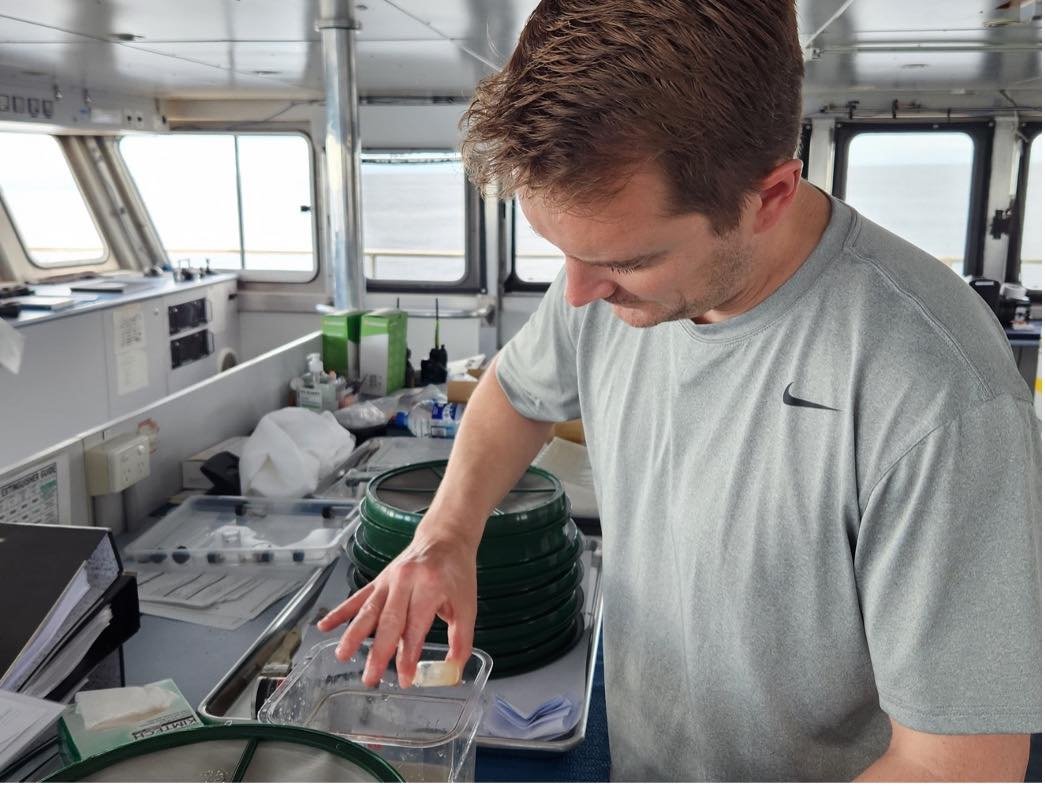

For our IM1 expedition, the saying, “never judge a book by its cover” means that we should not reach conclusions about the materials we retrieved in Runs 4 & 5 from the likely crash site of the first recognized interstellar meteor, IM1, based on appearance.
After my last report about the white fresh coat returned by the sled on Run 5, I was troubled by the statistical conclusion that there may be roughly a hundred buckets of white paint trashed per square kilometer on the ocean floor. It also did not make sense that the abundance of paint buckets would be equal to that of brad nails.
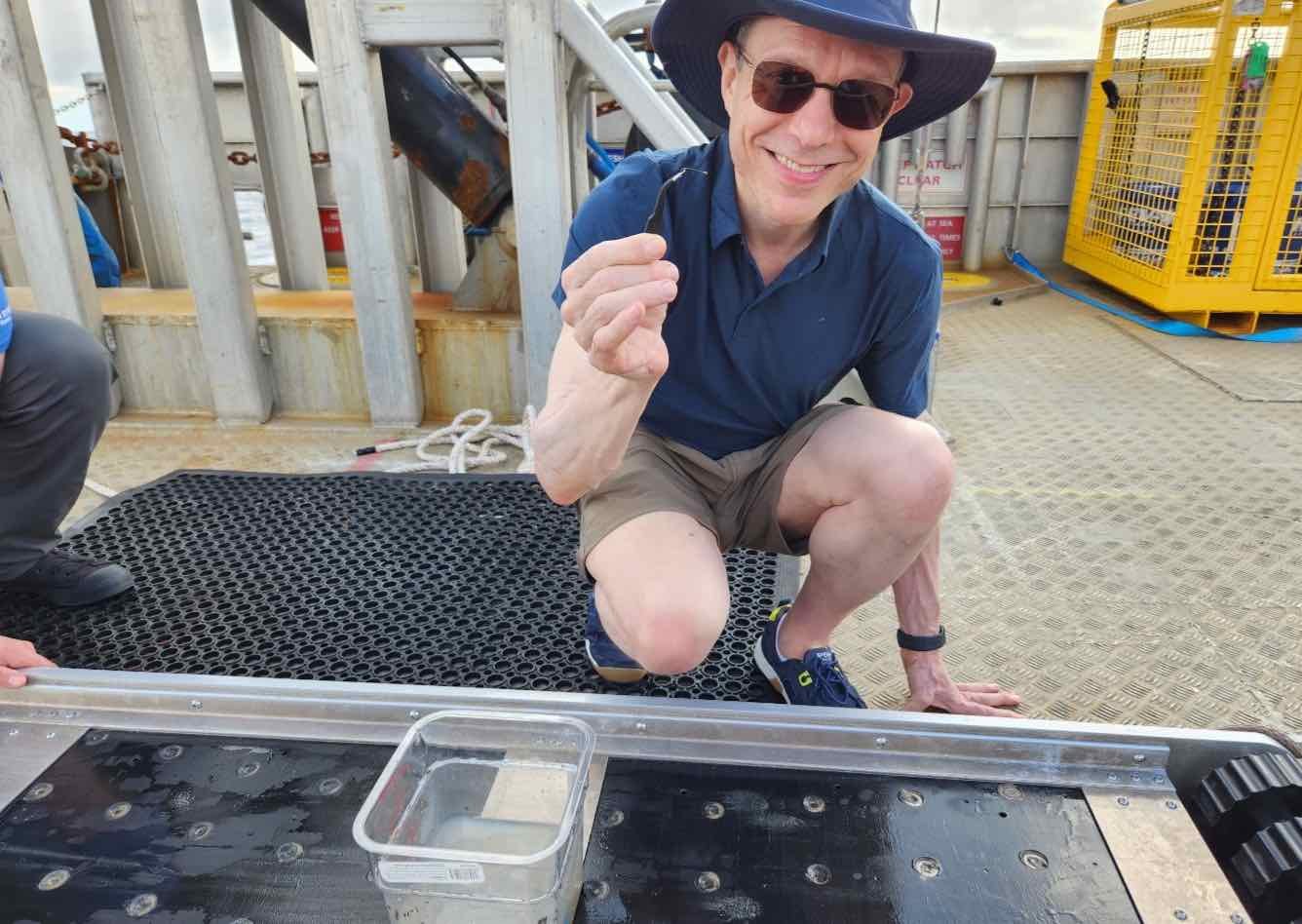

Ryan Weed and Jeff Wynn resolved my puzzlement. They used the X-ray fluorescence (XRF) analyzer to find the compositions of the retrieved materials. First, they confirmed that the brad nail was made mostly of a commercially common alloy of iron. Second, they found that the white liquid substance on the sled was not paint but rather a calcareous siliceous ooze which is biological in origin, containing mainly Ca, SiO2, Al2O3, Fe, and MgO. Siliceous ooze is a type of pelagic sediment made by silica-based skeletons of microscopic marine organisms, making about 15% of the deep ocean floor. Siliceous oozes near continental margins may also include terrestrially derived silica particles and sponge spicules. The white sphere into which the sled bumped must have been made of this ooze.
The biogenic material we recovered as fragments were Planktonic debris that dropped to the seafloor after it died. The forams are benthic and live on the seafloor.
Other than the biological materials, most of the black powder mass we collected appears to be a background of volcanic ash.
Paradoxically, Runs 4 & 5 brought much more material than we had before, but all of it has mundane explanations. This realization carried a great benefit: we now have a better understanding of the background and can identify outliers in future samples.
In the expedition team meeting, we decided to keep doing what we are doing and collect large samples of materials from the ocean floor in many more lines that crisscross the localization box provided by the US Department of Defense for IM1.
The beauty of science is that things fall into place and eventually make sense. We will keep searching for new knowledge in the form of anomalies on the backdrop of the vast background of what makes sense.
Avi Loeb is the head of the Galileo Project, founding director of Harvard University’s – Black Hole Initiative, director of the Institute for Theory and Computation at the Harvard-Smithsonian Center for Astrophysics, and the former chair of the astronomy department at Harvard University (2011-2020). He chairs the advisory board for the Breakthrough Starshot project and is a former member of the President’s Council of Advisors on Science and Technology and a former chair of the Board on Physics and Astronomy of the National Academies. He is the bestselling author of “Extraterrestrial: The First Sign of Intelligent Life Beyond Earth” and a co-author of the textbook “Life in the Cosmos,” both published in 2021. His new book, titled “Interstellar,” is scheduled for publication in August 2023.
